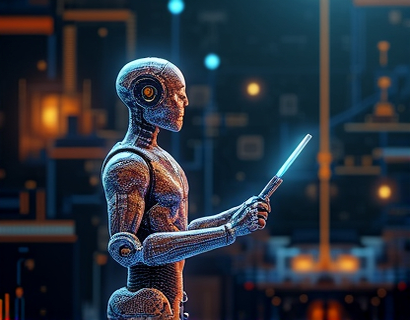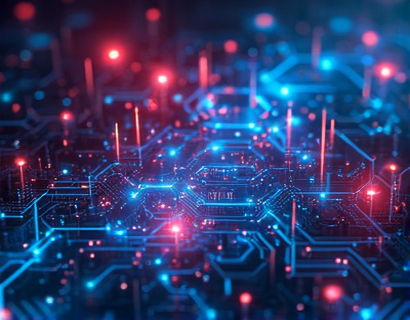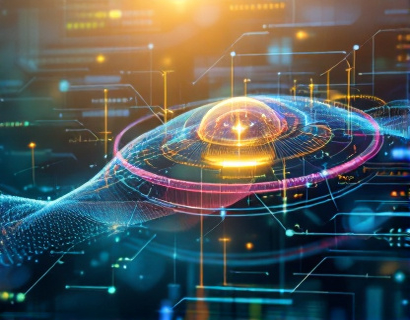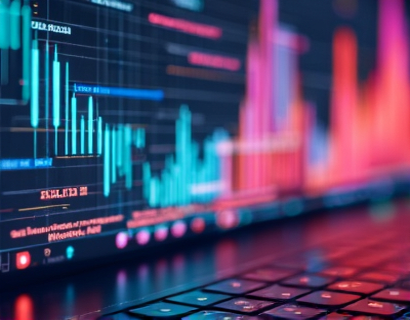Transforming App Ecosystems: The Synergy of Crypto and AI
The integration of cryptocurrency and artificial intelligence is revolutionizing the app ecosystem, paving the way for more efficient, secure, and seamless digital interactions. This convergence of technologies is not just a trend but a fundamental shift in how we perceive and utilize digital solutions. As we delve into this transformative landscape, it's essential to understand the key components and potential implications of this merging of forces.
Understanding Cryptocurrency and AI
Cryptocurrency, at its core, is a digital or virtual currency that uses cryptography for security and operates on a decentralized network, typically a blockchain. This decentralized nature eliminates the need for intermediaries, reducing transaction costs and increasing transparency. On the other hand, artificial intelligence involves the simulation of human intelligence processes by machines, particularly computer systems. These processes include learning, reasoning, and self-correction, enabling AI to perform tasks that traditionally required human intervention.
The intersection of these two technologies creates a powerful synergy. Cryptocurrency provides a secure and transparent medium for transactions, while AI enhances the functionality and user experience of applications built on this infrastructure. Together, they form the backbone of a new generation of apps that are not only more efficient but also more resilient to fraud and security threats.
Enhancing Security with Blockchain and AI
One of the most significant benefits of combining cryptocurrency and AI is the enhancement of security measures. Blockchain technology, the underlying framework for most cryptocurrencies, ensures that transactions are immutable and tamper-proof. However, the dynamic nature of AI can further fortify these systems by detecting and mitigating potential threats in real-time.
AI algorithms can analyze vast amounts of data to identify patterns and anomalies that may indicate a security breach. For instance, machine learning models can be trained to recognize unusual transaction patterns or suspicious user behavior, allowing for immediate alerts and automated responses. This proactive approach to security is crucial in a digital landscape where cyber threats are becoming increasingly sophisticated.
Moreover, AI can enhance the security of cryptocurrency wallets and exchanges. By implementing AI-driven authentication methods, such as behavioral biometrics, the risk of unauthorized access can be significantly reduced. These methods analyze user behavior and device patterns to verify identity, providing a more robust security layer than traditional password-based systems.
Optimizing User Experiences through Personalization
AI's ability to process and analyze large datasets makes it an invaluable tool for personalizing user experiences. In the context of cryptocurrency and app ecosystems, this means tailoring services to individual user preferences and behaviors. For example, a crypto trading app can use AI to analyze a user's trading history and market trends to provide personalized recommendations and alerts.
Personalization extends beyond just recommendations. AI can optimize the user interface and experience based on user interactions, ensuring that the app is intuitive and user-friendly. This level of customization not only enhances user satisfaction but also increases engagement and retention rates. In a competitive market, the ability to offer a seamless and personalized experience can be a significant differentiator.
Streamlining Transactions with Smart Contracts
Smart contracts, self-executing contracts with the terms of the agreement directly written into code, are another area where AI and cryptocurrency intersect. These contracts automatically enforce and execute the terms of an agreement when predefined conditions are met, eliminating the need for intermediaries and reducing transaction costs.
AI can further enhance the functionality of smart contracts by providing predictive analytics and risk assessment. For instance, AI algorithms can analyze historical data to predict market trends and potential risks, allowing smart contracts to make more informed decisions. This integration ensures that transactions are not only secure and efficient but also optimized for the best possible outcomes.
Decentralized Applications and AI Integration
Decentralized applications (dApps) are at the forefront of the crypto and AI revolution, offering decentralized alternatives to traditional centralized applications. These dApps leverage blockchain technology for decentralized governance and AI for enhanced functionality. For example, a decentralized finance (DeFi) platform can use AI to optimize lending and borrowing processes, providing users with better interest rates and more efficient loan approvals.
The combination of decentralization and AI in dApps also promotes greater transparency and trust. Users can verify the integrity of the application and its data through the blockchain, while AI ensures that the application operates optimally and securely. This dual benefit makes dApps an attractive option for users seeking reliable and trustworthy digital solutions.
Challenges and Considerations
While the potential of merging cryptocurrency and AI is vast, there are several challenges and considerations that need to be addressed. One of the primary concerns is the regulatory landscape. As both cryptocurrencies and AI are relatively new and rapidly evolving fields, regulatory frameworks are still catching up. Ensuring compliance with existing laws while advocating for supportive regulations is crucial for the sustainable growth of these technologies.
Another challenge is the technical complexity involved in integrating AI with blockchain systems. Developing robust and scalable solutions requires expertise in both domains, which can be a barrier for many developers and organizations. Additionally, the computational resources required for AI algorithms can be substantial, potentially leading to higher costs and energy consumption.
Future Prospects and Innovations
Looking ahead, the convergence of cryptocurrency and AI is poised to drive significant innovations in various sectors. In the realm of finance, AI-driven crypto trading platforms can offer more accurate predictions and automated trading strategies, revolutionizing the way investors approach the market. In healthcare, AI can analyze medical data stored on blockchain to provide personalized treatment plans and improve patient outcomes.
The Internet of Things (IoT) is another area where this synergy can make a substantial impact. AI can process data from IoT devices on the blockchain, ensuring secure and transparent data sharing and analysis. This can lead to more efficient and reliable smart city solutions, from traffic management to energy distribution.
Furthermore, the development of decentralized AI models, where AI algorithms are trained and run on a blockchain network, can address concerns about data privacy and centralization. These models can leverage the collective computing power of the network while maintaining user control over their data, creating a more equitable and secure AI ecosystem.
Conclusion
The merging of cryptocurrency and AI is not just a technological advancement but a paradigm shift in how we approach digital interactions. By enhancing security, personalizing user experiences, and optimizing transactions, this synergy is reshaping the app ecosystem in profound ways. As we continue to navigate this exciting frontier, it's essential to stay informed and adapt to the evolving landscape. For tech enthusiasts and professionals alike, the future of technology is bright, with endless possibilities at the intersection of crypto and AI.











































